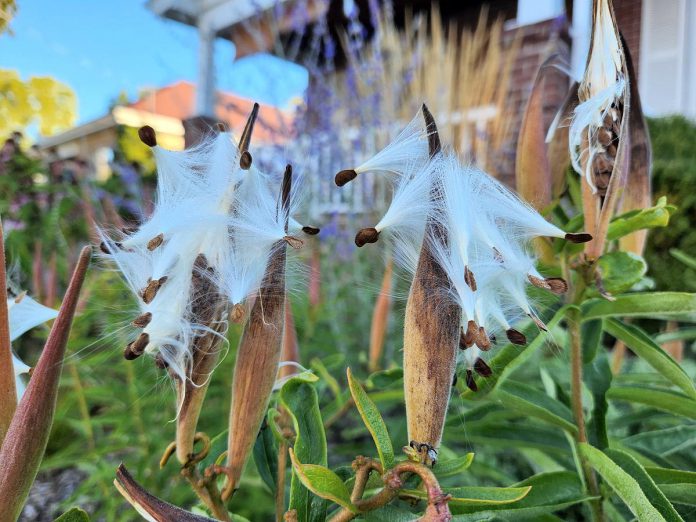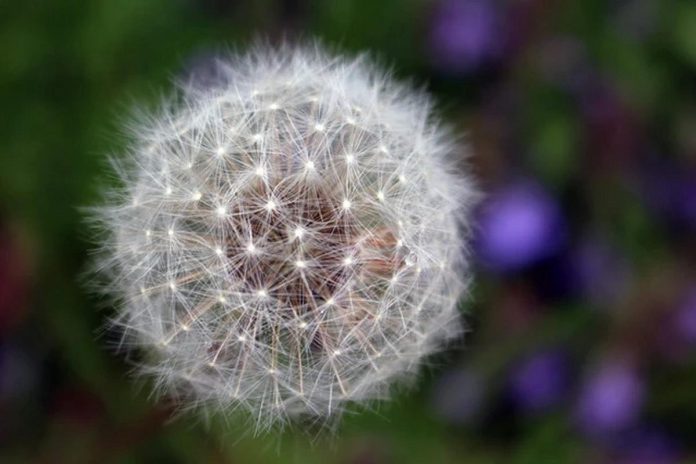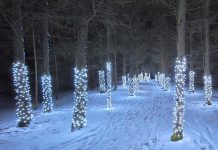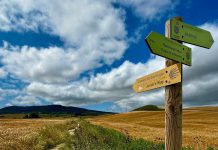
Can plants move? If you said no, think again. Plants may not have feet, but their seeds can still be dispersed from one place to another.
Have you ever had burs (common burdock) stick to your clothing when exploring outside? Have you blown the fluffy white seeds of a dandelion into the wind and made a wish? Or have you noticed birds eating the berries off of shrubs and trees? These are just a few ways that seeds can disperse.
Seed dispersal is important for biodiversity conservation and maintaining healthy ecosystems. Dropped seed has to compete for light, water, and soil nutrients. Seed dispersal mechanisms allow new plants to grow away from their parents in areas with less competition.
Seeds can be dispersed in various ways: by wind, animals, gravity, ballistics, and water.
Wind is the most common way for seeds to disperse. Lightweight seeds — including dandelions, milkweed, and maple seeds — can be carried in the wind. Maple keys make a spinning motion when they are blown in the wind, giving them the appropriate title of “helicopter seeds.” Dandelions and milkweed seeds both have feathery attachments that create a parachute-like effect in the wind.
There are many ways that animals can spread seeds. For example, squirrels store acorns and walnuts in the ground for winter. The forgotten seeds can produce new plants. Some plants such as common burdock (Arctium minus) have special adaptations that allow them to be picked up by animal furs and feathers. These are also known as “hitchhiker seeds.”
Many birds ingest different berries or fruits from plants such as Virginia creeper (Parthenocissus quinquefolia) and staghorn sumac (Rhus typhina) and spread their droppings (with seeds) elsewhere. In other words, yes, animal poop is one way for seeds to travel.

Gravity also transports seeds. Seeds can simply fall to the ground. Take a look at the fruit of apple trees. When an apple falls from a tree, so does its seeds. Because of their size and shape, they may roll some distance from the parent plant, increasing their survival rate. Not only that, but seeds that fall at the top of a slope are often washed down to other locations by surface water runoff.
Another (shocking) way seeds can be spread is through explosions or ballistics, which sounds like a much more intense process than it really is. Some plants like peas and native jewelweed (Impatiens capensis) have seed pods that split open and scatter once they are dried out.
Water can also move seeds, depending on topography. Water’s current can carry seeds to a more suitable growing environment away from the parent plant.
But wait, let’s circle back to animals again. Humans play a large role in seed dispersal, sometimes unintentionally. Many activities including farming, gardening, transportation, and recreation (like outdoor sports) can move seeds around.
The impacts of these activities can be good or bad. In an era of biodiversity decline, human-assisted conservation is critical for the survival of certain plants.
On the other hand, human dispersal of seed is responsible for the spread of many invasive species. It is so important to stop the spread of invasive plants by planting, sharing, and buying non-invasive native plants and seeds.

The winter is a great time to start planning your native plant garden with plants that can spread their seeds into our local ecosystems.
During the spring, summer, and fall season, you can find non-invasive and native trees and plants at the Ecology Park Native Tree & Plant Nursery located at 1899 Ashburnham Dr. They include native wildflowers, plants, grasses, and tree varieties and Ecology Park staff are knowledgeable and happy to you help out with selecting a plant. The Native Tree & Plant Nursery opens for the growing season on the May long weekend. For more information, visit greenup.on.ca/ecology-park/nursery/.
Peterborough’s annual Seedy Sunday is coming up soon on Sunday, March 10th from 11 a.m. to 3 p.m. at Peterborough Square. This is a popular seed exchange where participants can trade or buy seed (mainly edible) with other gardeners and learn more about seed saving. Hayley Goodchild, program coordinator of plant propagation of GreenUP, will be in attendance, as will many other local experts. Seedy Sunday is full of seed knowledge, tools, and resources to help prepare you for some native gardening this season. Check out more information about the event at urbantomato.ca/learn/seedy-sunday-peterborough/.



























